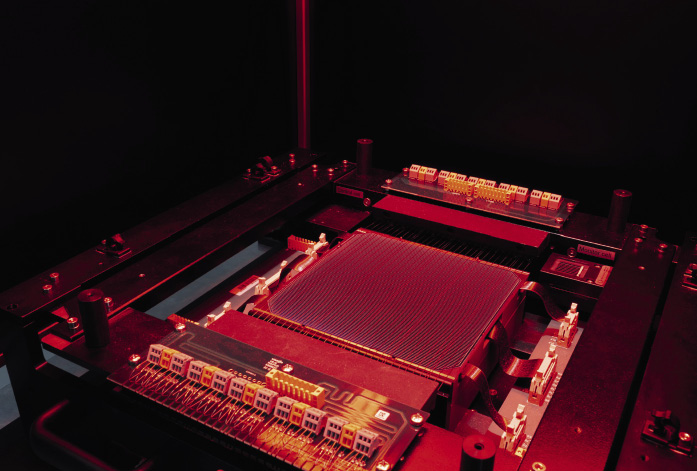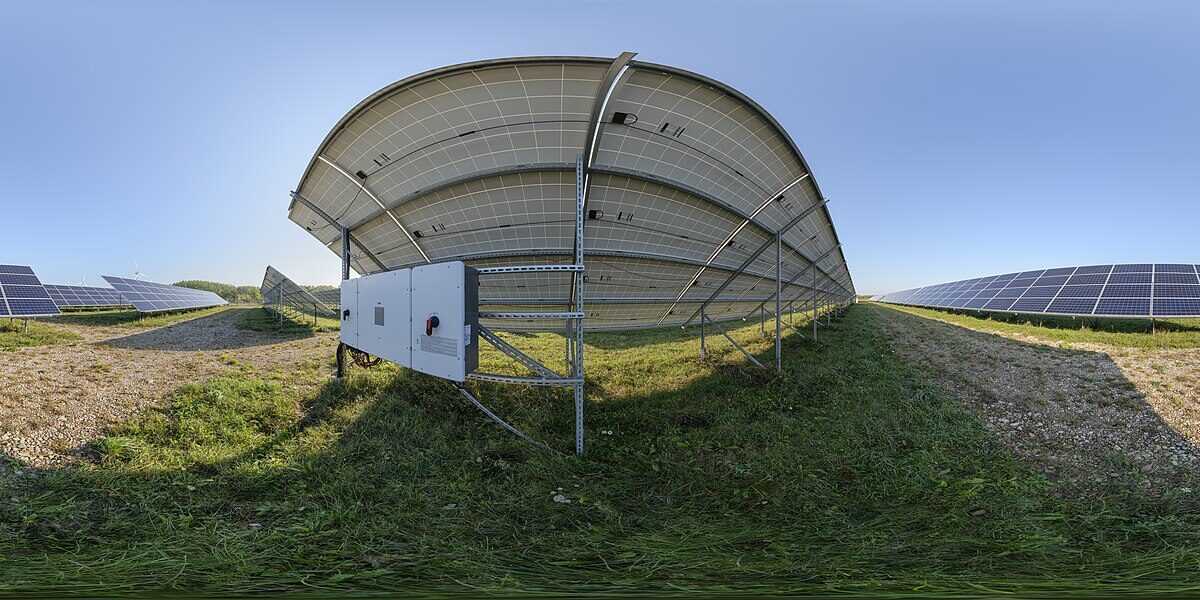From the June edition of pv magazine
The performance boost provided by bifacial is dependent on a range of factors that can vary enormously between installations – the color of the ground, as well as the height and pitch of the modules. Typically, the boost is described as ‘between a 5% and 30% increase in output.’ But investors and project owners want far more certainty than this, making projects utilizing bifacial modules more difficult to finance, and also potentially leading to such projects missing out on additional output through simple optimizations.
Gaining an improved understanding of bifacial performance will involve a lot of testing conducted in the field. The first stage though is the flash testing conducted on production lines, which determines the efficiency and power rating of the cell/module. And there is plenty of debate in this area, surrounding first how the bifacial boost should be expressed – as extra watts on the power rating, as extra energy yield, or using the ‘bifacial coefficient’ measurement – and second how the flash test should physically be conducted.
Bifacial flashers
Several manufacturers of flash testing equipment have rolled out machines that allow for simultaneous flashing on both sides, stating that this is the only way to ensure accurate characterizations. Others argue that single-sided measurement, incorporating a reference module for the rear side, is sufficient for an accurate measurement, and that double-sided flashing reduces throughput and adds needless complexity to production processes, as well as requiring large capex investment for new tools.
Germany’s h.a.l.m. elektronik GmbH is one manufacturer that has introduced a tool with two light sources for double-sided flashing of cells, the cetisPV-IUCT-BF-3600, and the company appears convinced that this will be the way the industry moves as bifacial gains more commercial ground. “Adding a larger uncertainty to bifacial output power if performed in one testing station or increasing costs if two stations and a flipping station are used, single-sided testing seems not to be a good option for testing of bifacial cells in the future,” explains Klaus Ramspeck, R&D Director at h.a.l.m. “This is what the market reflects back to us as well: More and more customers who produce bifacial cells turn to bifacial measurement equipment to obtain precise results.”
Other manufacturers with two-sided cell or module flashers on the market include Germany’s Wavelabs, Italian tool maker Ecoprogetti, and China’s Gsolar. And taking both sides into account during flash testing would appear to fit in with the current trend for manufacturers looking for ever more granular data with which to optimize their processes and ensure quality (see pv magazine 04/2019, p. 56). “We think it should be obligatory to flash at one sun intensity from both sides,” says Jason Nutter, Head of Sales at Wavelabs. “If you only flash on a single side, you will not be able to understand power rating or bifaciality of the module.”
He continues to explain that the issue is really with the variation from manufacturing conditions, and that even two modules cells produced one after the other can end up having different degrees of bifaciality. “If all cells and modules were made in ideal conditions with a tight band of variation in bifaciality, you could get away with a single side tester,” says Nutter. “But seeing that modules and cells currently have large variance in bifaciality, for us, you need two sides for an accurate understanding.”
Single side
Other suppliers of flash testing equipment are sticking with single-sided flash testing, and claim that the added costs and complexity associated with integrating two-sided flashing into production lines will not be worth the trouble for many manufacturers. “I don’t see the need to transfer [two-sided flash testing] into production,” says Gregory Bordogna, Head of Products and Service at Meyer Burger subsidiary Pasan. “It will be very costly and complicated to implement.”
Bordogna goes on to note that the decision on which testing type to implement can also depend on the supplier’s business model, with dedicated cell suppliers more likely to see a benefit in flashing both sides during production, as this could allow them to increase power ratings and add value to their products. “Some cell makers are doing testing on both sides,” he explains. “And many are also looking to keep their options open, at least requesting upgradeability to two-sided testing. This is a commitment we are increasingly making to our customers.”
As with most aspects of bifacial, the development of flash testing solutions is in its early days, with few earlier examples to learn from. Current standards from the International Electrotechnical Commission (IEC) describe both one and two-sided testing as appropriate for bifacial cell flash testing. It should be noted, however, that this standard (IEC TS 60906-1-2) is described for ‘photovoltaic devices’ and mainly based on findings at the module level. A second working group within the IEC is also working on a standard specific to cell testing, though this will also describe both testing types as applicable.
For bifacial products flashed only on the front side, a reference cell tested and calibrated in a laboratory is used to assume the performance of the rear side. And the IEC standards specify that provided process variation is kept within five percent, this will provide a highly accurate characterization. “The IEC’s conclusions are based on experiments comparing the results of different flashing approaches with results from field performance,” says Bordogna. “Five percent is not an arbitrary number.”
Modeling performance
Belgium-based research institute imec has developed a simulation framework for bifacial, which it says can calculate the expected energy yield of any bifacial PV system. The framework utilizes flash test data in these calculations – whether from a product data sheet or testing conducted by imec – and its creators say that accurate rear-side performance data is vital to understanding in-the-field performance. “Capturing the light intensity dependent behavior of both the front and rear side of the PV modules is an essential input,” says Eszter Voroshazi, R&D manager of PV module and systems activities at imec. “I see this as an important input element on industrial scale to include in bifacial module data sheets. Similar to the front side I-V curves, a few I-V curves from the rear at different intensities should be included.”
Given the potential to get closer simulation of field conditions, there is definite interest in two-sided flashing solutions. But the IEC’s finding that accurate results can also be gained using a compensation method will likely lead to some manufacturers deciding to avoid the additional investment.
h.a.l.m’s Ramspeck says that various innovations in the company’s cell flasher keep these costs under control. He claims the cost of the tool is around 35% higher than for a typical single-sided flasher, and estimates that operating costs increase by around $0.002/W thanks to the use of a second bulb on the rear side, which he says has a lifetime of around
five million flashes. He also notes that initial reports suggest that rear-side performance could be connected to degradation in the field. “First customer reports show as well, that low rear-side efficiency may as well be correlated with degradation behavior of the cell,” Ramspeck explains, “whereas no differences are observed in front-side efficiency.”
Remaining challenges
Aside from the additional cost, adding rear-side testing to production lines comes with further complications. There is continuing debate over the optimal intensity for the rear side, and potential issues with interference between the two light sources affecting accuracy. While both of these can be solved within the design of the tool, another issue noted by Ramspeck – which could have broader implications – is the increase in categories needed when cells are flashed and sorted based on bifacial output. “It needs to be adapted by the market that bifacial cells are binned to bifacial output rather than to monofacial,” he explains. “Binning to both front and rear-side efficiency leads to strongly increased number of bin classes, which exceeds the available space in sorters.”
This content is protected by copyright and may not be reused. If you want to cooperate with us and would like to reuse some of our content, please contact: editors@pv-magazine.com.




Then comes the algorithm for binning the cells for the best front side, back side or bifaciality performance. It will be great when bifaciality is consistently better than 0.9!